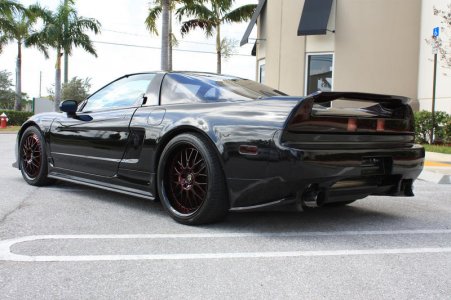I've had the car for a little more than a year, and this problem has been occurring for a couple of months. Performance is really flat below 4500 rpm, then the power comes on like it should (full throttle, as they say!). It's like driving a turbo. Problem "feels" fuel related.
I checked out the forums, and I jumpered out the fuel pump resistor. The power was there at all rpm, so I figured it was the fuel pump resistor. I bought a new fuel pump resistor, but when I installed it the problem was still there. I replaced the fuel filter (external, not the one on the fuel pump), same problem. I've also changed out the air filter, for what it's worth.
Car is a 1992, manual transmission, with 107,000 miles.
There are still some things I could try, the Service Manual says to physically measure the fuel flow. I should probably also check the resistance of the new fuel pump resistor, but I'm assuming it's okay since the problem is the same on the old resistor and the new one.
Does anyone have any ideas or suggestions? My understanding is that the fuel pump resistor causes the fuel pump to put out a lower volume of fuel below ~4500 rpm, then the pump gets full voltage and pumps at maximum volume. This seems to be what is happening - at rpms below 4500 the fuel flow just isn't high enough unless the resistor is jumpered out. Is there something else in the circuit below 4500 rpm that could be causing this fault? Can I drive the car long-term with the fuel pump resistor jumpered out (it's sooo much more fun to drive it when it develops full power)?
Thanks,
Daniel Exum
I checked out the forums, and I jumpered out the fuel pump resistor. The power was there at all rpm, so I figured it was the fuel pump resistor. I bought a new fuel pump resistor, but when I installed it the problem was still there. I replaced the fuel filter (external, not the one on the fuel pump), same problem. I've also changed out the air filter, for what it's worth.
Car is a 1992, manual transmission, with 107,000 miles.
There are still some things I could try, the Service Manual says to physically measure the fuel flow. I should probably also check the resistance of the new fuel pump resistor, but I'm assuming it's okay since the problem is the same on the old resistor and the new one.
Does anyone have any ideas or suggestions? My understanding is that the fuel pump resistor causes the fuel pump to put out a lower volume of fuel below ~4500 rpm, then the pump gets full voltage and pumps at maximum volume. This seems to be what is happening - at rpms below 4500 the fuel flow just isn't high enough unless the resistor is jumpered out. Is there something else in the circuit below 4500 rpm that could be causing this fault? Can I drive the car long-term with the fuel pump resistor jumpered out (it's sooo much more fun to drive it when it develops full power)?
Thanks,
Daniel Exum




